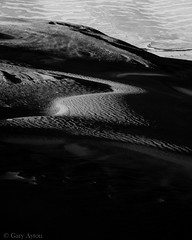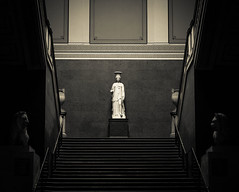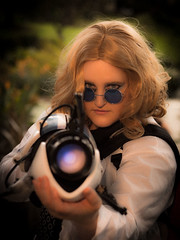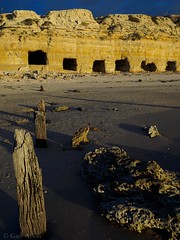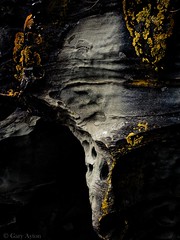HD video can be captured with the following options with various cameras:
- frame capture rates of 24, 30, 60 fps for NTSC and 25, 50 fps if PAL with 24/25 being preferred for those wanting a more film-like appearance, 30p is not a preferred rate.
- if you capture at 60/50 fps then one can get a 2x slow motion video from it. If it was possible to capture 720p at 120 fps you could get 5x slow motion 24p.
- video is progressive (p) if all frames are full frames, or interlaced (i) if each frame only captures half the lines on each image.
- full HD resolution is 1920×1080 pixels (1080i) while standard HD resolution is 720p
- motion jpeg records a series of still jpeg images and thus is easily edited on most computers but does take up a lot of disk space. This also enables it to track high-speed action at 30fps without any of the smeared motion artifacts that plague low-bitrate AVCHD videos. The MJPEG encoder also excels in difficult low-light conditions where the AVCHD encoder cuts down its bitrate to minimum quality levels
- AVCHD is a compressed format which utilises the differences between stills, with the 1st image being the i-frame, and subequent frames are stored as P frames but only the data that has changed is encoded. this causes issues with rapidly changing imagery such as a panning camera or moving subjects. The quality is dependent upon various factors including the Group of Pictures (GOP) setting and whether B-frames and D-frames are utilised. Lowering the GOP makes it more like motionJpeg.
- the new AVCHD 2.0 specs allow for 1920x1080p 30/50/60 fps 4:2:0 at up to 28Mbps plus 3D support – the forthcoming Panasonic GH-3 is expected to adopt this.
- color and brightness can be encoded as either 4:2:2 sampling (requires more processing) or 4:2:0 sampling
- sampling quality is generally indicated by megabits per second (Mbps) of image recorded – most current cameras by default record at 13-17Mbps, although the unhacked Panasonic GH-2 records at 23Mbps. Hacking of the firmware is often done to increase this rate to 35-100Mbps but at risk of issues with recording to cards (may require faster cards) and in-camera playback compatibility.
- higher quality means you may need a faster SD card, and you should consider formatting the card in camera prior to shooting HD video to minimise card fragmentation.
The AVCHD video of the Panasonic GH-1 gave only 17Mbps quality and this resulted in mud artefacts on motion.
Firmware hacking software for Panasonic GH-2, and GH-1:
Fortunately, the firmware was soon hacked and this hacking has now matured and is virtually risk free thanks to the PTool sofware to the point that it now offers the following features:
- works on all Panasonic GH1 and GF1 cameras, both hacked and unhacked
- camera switchable between NTSC and PAL modes, in all interface languages.
- removes 30min time limit for AVCHD videos
- removes limit on batteries so you can buy batteries from other than Panasonic
- ability to restore to initial firmware easily or switch between firmwares – just have a different version on each SD card and install as needed!
GH-1 “Reliable in-camera playback patch” offers:
- 40Mbps FHD mode – AVCHD 1920×1080 24p/25p video (interlaced)
- 40Mbps SH mode – AVCHD 1280×720 50p/60p video (progressive)
- 35Mbps HD mode – MJPEG 1280×720 30p video in 4:2:2 color
- 30Mbps VGA mode – MJPEG 960×720 30p video (iPad-compatible)
- apparently recommended for dense foliage, running water
- if your main concern is in-camera playback and reliability with great video quality and iPad support, this is the one for you!
GH-1 “Blackout-Powell Native 24p Patch v2” offers:
- MJPEG HD mode: 1280×720 HD videos in 4:2:2 color depth, with peak bitrates up to around 60Mbps.
- MJPEG VGA mode: 960×720 iPad-compatible videos, with peak bitrates up to 30Mbps.
- optional anamorphic lens settings
GH-1 “100Mbps Max Latitude Patch V2” offers:
- provides much improved dynamic range
- Expanded video and audio buffers to guard against recording failures at high bitrates
- 15-frame GOP-size in both PAL Native 25p and NTSC Native 24p video modes
- Standard patch: 30Mbps iPad-compatible VGA MJPEG mode records in 960×720 resolution.
- Anamorphic patch: 65Mbps 2X anamorphic VGA MJPEG mode records in 1920×720 resolution.
- apparently recommended for night, or indoor videos
- will not playback in camera if MJPEG or if high bitrate AVCHD.
- AVCHD 4GB file-spanning for long video takes may not work reliably at high bitrates. For reliable recording of takes longer than about 12 minutes, select the “H” video mode instead of “SH”. This will produce average bitrates of about 24Mbps in 720p25/30 modes.
- For extended recording times at moderate bitrates, selecting the “L” video mode instead of “SH” will produce bitrates below 17Mbps.
- If shutter speed is set longer than the frame rate (e.g. slower than 1/30 at 30p), low-quality video files may be produced
- While AVCHD bitrates may drop to very low levels in extremely dark situations, the 1080p FHD modes should continue to record even in total darkness. 720p SH modes may stop recording if subjected to darkness for over 10 seconds at a time.
- see here for more details
GH-2 hacks:
- the unhacked GH-2 offers 1920×1080 AVCHD in either 24p (at 17 or 23Mbps) or 50/60i (at 13-17Mbps) plus 720p 30fps MJPEG
- according to this web site:
- GH2 maintains error-free recording stability at bitrates significantly exceeding those that can be used reliably on the GH1. And where the GH1 struggled to produce FHD-size videos in MJPEG mode, the GH2 can be readily patched to record in any MJPEG frame size, all the way up to 1920x1080p.
- On the GH1, MJPEG HD mode could be relied on to produce bitrates over 24Mbps even in dimly-lit scenes. With patch settings optimized for consistent bitrate production, the GH2 can maintain high bitrates of up to 100Mbps across the entire exposure range, producing high-quality images under any and all illumination levels. Combined with the GH2’s low-noise image sensor, MJPEG HD mode can render clean, gradable images in conditions that the GH1 would have found hopelessly underexposed.
GH-2 “100Mbps GH2 Low Light MJPEG 1080p Patch” offers:
- 100Mbps 1920x1080p 30fps MJPEG
- VGA MJPEG mode 960×720 30fps videos at consistent average bitrates of about 30Mbps for iPad
- may not be playable in-camera and may have some audio bugs
- has higher chroma noise, less detail overall than the AVCHD and a pink tint due to lower NR in red channel.
- so it is still early days with GH-2 hacking and it may be best to stick with the superb Vitaliy 42mps AVCHD 1080p hack – see here.
WARNING: Hacking is in a state of flux. Always check the latest information on the patches as the above may no longer hold true. Check the forums.

